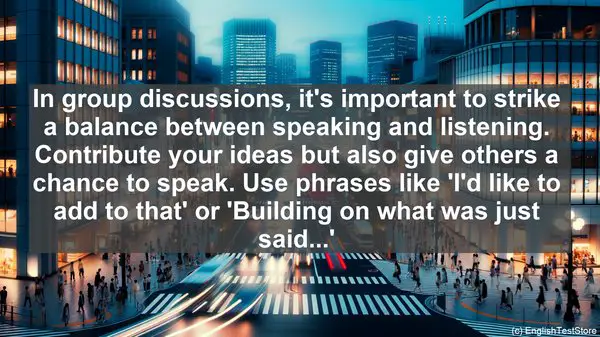Introduction: The Importance of Effective Participation
Welcome to today’s lesson where we’ll be discussing an essential skill for professionals: participating in work meetings in English. Whether you’re a student or already in the workforce, these tips are bound to come in handy. So, let’s dive in!

1. Prepare Ahead: The Key to Confidence
Before any meeting, make sure you’re well-prepared. Familiarize yourself with the agenda, key topics, and any relevant vocabulary. This not only boosts your confidence but also allows you to actively contribute to the discussion.
2. Active Listening: More Than Just Hearing
Listening attentively is crucial. It’s not just about hearing words but also understanding the context and speaker’s intent. Focus on non-verbal cues, tone, and emphasis to grasp the complete message.
3. Take Notes: Your Personal Reference
During the meeting, jot down important points. These notes serve as a reference later, helping you recall details and contribute effectively. Develop your own shorthand for quick and organized note-taking.
4. Ask for Clarification: Don’t Hesitate
If something isn’t clear, don’t hesitate to ask for clarification. It’s better to seek understanding than to make assumptions. Use phrases like ‘Could you please elaborate?’ or ‘I didn’t quite catch that. Could you repeat?’
5. Use Structured Language: Get Your Point Across
When expressing your thoughts, use structured language. Start with an introduction, present your point, and provide supporting examples or evidence. This not only makes your ideas clear but also showcases your language proficiency.
6. Engage in Turn-Taking: Strike the Balance
In group discussions, it’s important to strike a balance between speaking and listening. Contribute your ideas but also give others a chance to speak. Use phrases like ‘I’d like to add to that’ or ‘Building on what was just said…’

7. Be Mindful of Time: Stick to the Schedule
Time management is crucial in meetings. Be mindful of the agenda and avoid going off on tangents. If you have a lot to say, summarize your points concisely. This shows respect for everyone’s time.
8. Use Visual Aids: Enhance Understanding
If appropriate, use visual aids like charts, graphs, or slides to support your points. These not only enhance understanding but also make your presentation more engaging.
9. Recap and Summarize: Reinforce Key Points
At the end of the meeting, take a moment to recap the key points discussed. This reinforces everyone’s understanding and ensures alignment. It also shows that you’ve been actively involved throughout.
10. Follow Up: The Lasting Impression
After the meeting, follow up with a summary email. This not only serves as a record of the discussion but also showcases your professionalism. Include action items, deadlines, and any other relevant details.
